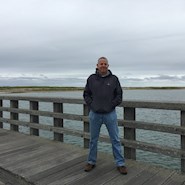Brian Brenner, P.E., F.ASCE, is a professor of the practice at Tufts University and a principal engineer with Tighe & Bond in Westwood, Massachusetts. His collections of essays, Don’t Throw This Away!, Bridginess, and Too Much Information, published by ASCE Press, are available in the ASCE Library.
In his Civil Engineering Source series, More Water Under the Bridge, Brenner shares some thoughts each month about life as a civil engineer, considering bridge engineering from a unique, often comical point of view.
We learned about a “Bridge to Nowhere.” This bridge was built high in the mountains north of Los Angeles. It could be reached by a challenging hike on a trail crossing desert rocks and a busy mountain river. It was said that the river needed to be forded six times.
The bridge was constructed in 1936 as part of the East Fork roadway, a mountain highway to be built from the Los Angeles area north to the high desert. The road was partially constructed but never completed. Unfortunately, the construction project was canceled after flash floods in March 1938. Parts of the road remained, along with the unused bridge. The span ended up isolated in the wilderness, waiting to serve a highway that never arrived.
I planned to hike with fellow bridge engineer Eric, who lives in Southern California. Our hike to the mysterious bridge was scheduled for March of this year. But as we planned our hike, it ended up canceled by an unfortunate event that I’ll describe later. With our plans dashed, we decided to go on a virtual hike instead, and our journey is described below. Since this hike was virtual and not actual, some liberties and use of poetic license have been taken with the descriptions of the events (which didn’t actually happen).
Hiking from the trailhead to the Bridge to Nowhere is about 5 miles long, taking about three hours with a vertical climb of over 1,000 feet. There is a small parking lot at the access point that is said to fill quickly (when real hikers actually drive there). So, in our imaginations, we arrived early on a March morning before the parking lot filled with prospective hikers.
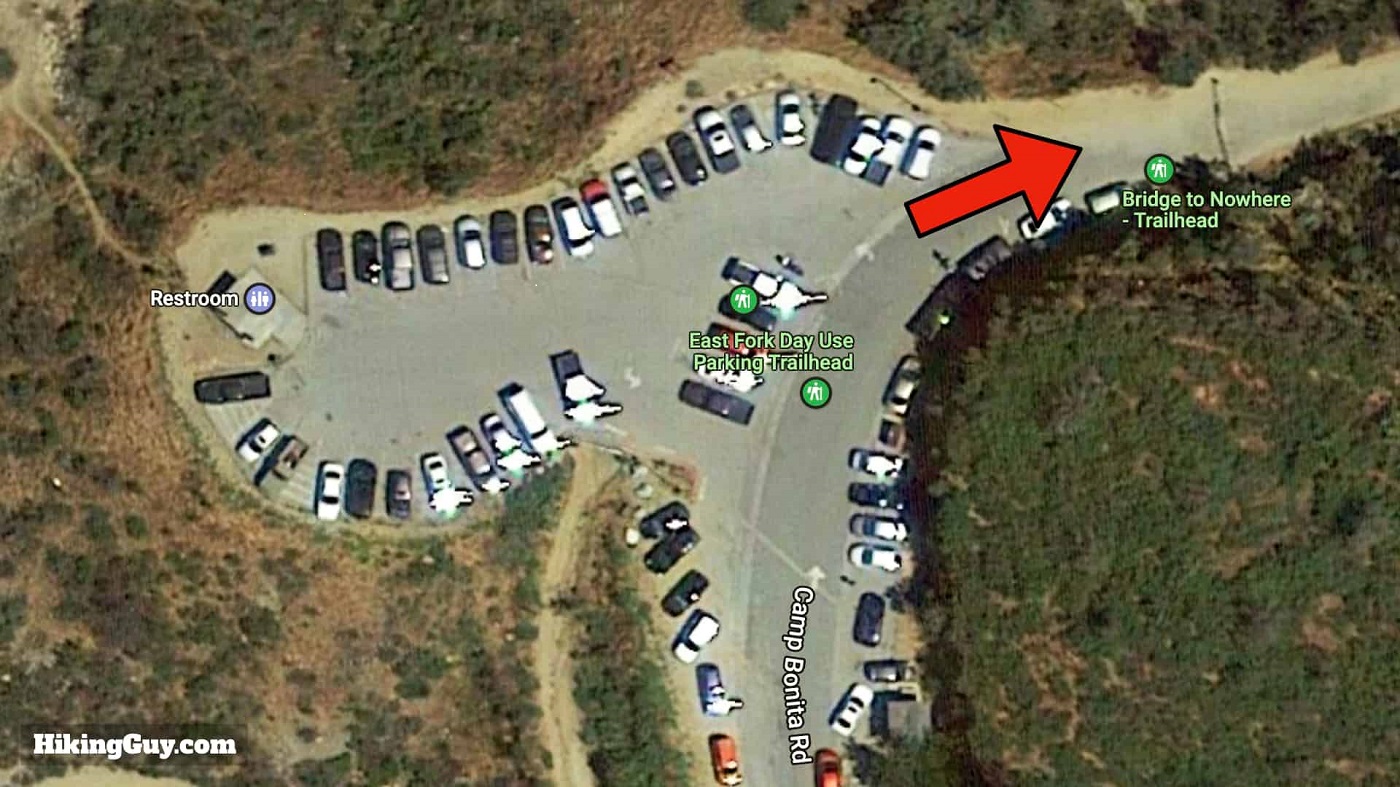 HikingGuy.com
HikingGuy.com
The trail follows the banks of the San Gabriel River. The river is often dry, but not necessarily in March when it is subject to spring floods. We had to be careful to avoid flash floods, which would have virtually washed us away.
 Scott Kennedy
Scott KennedyThe hike started off gradually, with easy grades and dramatic mountain scenery. Thirty minutes in, the virtual pace picked up. The trail narrowed in spots and featured some rocky outcrops. Since it was imaginary March, the river was very wet from spring rains, and we faced strong currents in our first river fording.
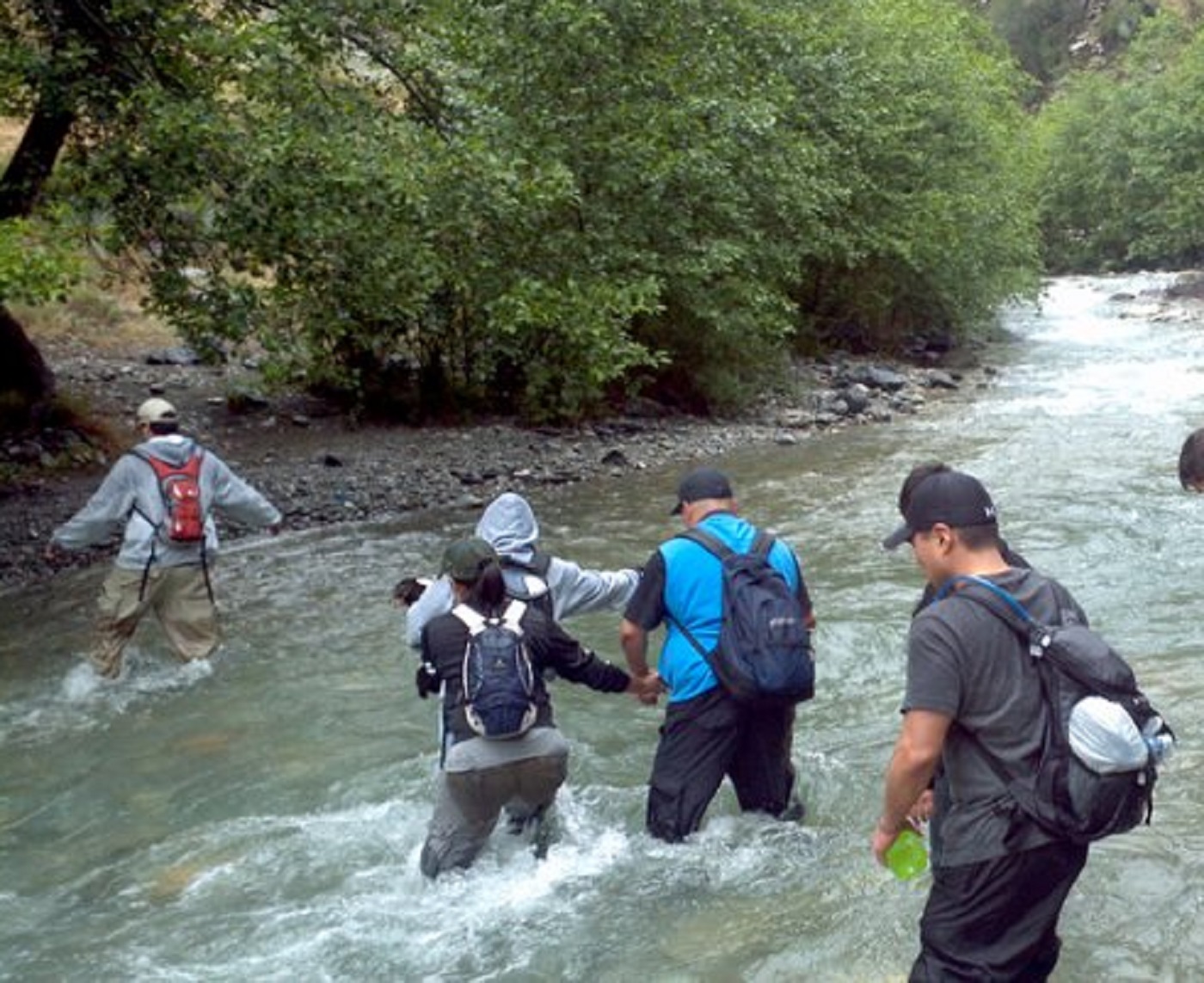 yourfavoritehiker.com
yourfavoritehiker.com As we continued, the river peacefully gurgled alongside, until it appeared to widen out into a place that strangely looked like the Straits of Messina between Sicily and the southern tip of the Italian boot. This was a peculiar sight for sure in Southern California, but stranger still was our encounter with the mythical Greek monsters, Scylla and Charybdis. These monsters had not been heard from for many centuries. In ancient times, they tormented Greek sailors and posed a terrible choice: to pass to safety, sailors had to confront either Scylla or Charybdis. Apparently, these monsters had somehow relocated to the San Gabriel Mountains and now resided in the river.
Crossing a river blocked by the monsters was problematic. Scylla, as we know from Greek mythology, is a hungry and mean-looking monster with five attached nasty dog heads. Charybdis is a sentient whirlpool. Both have a taste for sailors and bridge engineers.
It fell upon Eric, whose middle name is “Odysseus,” to select which demon to battle. He chose to fight Scylla. Fortunately, he was carrying a large sword and was wearing chain-plate armor beneath his hiking toga. In short order, he made mincemeat of Scylla and successfully avoided Charybdis. This was impressive because Eric is known to be a great engineer and project manager, but not much of a gladiator. Thanks to his heroics, we proceeded on our hike unscathed.
Some hikers we encountered mentioned that there were sightings of other mythical creatures virtually wintering in the San Gabriel Mountains, such as the Lake Champlain Monster. But fortunately, we didn’t encounter any more creatures. We only had to face ourselves on the challenging trail. As the day wore on, we hiked higher up into the drylands and scrub forests on our quest.
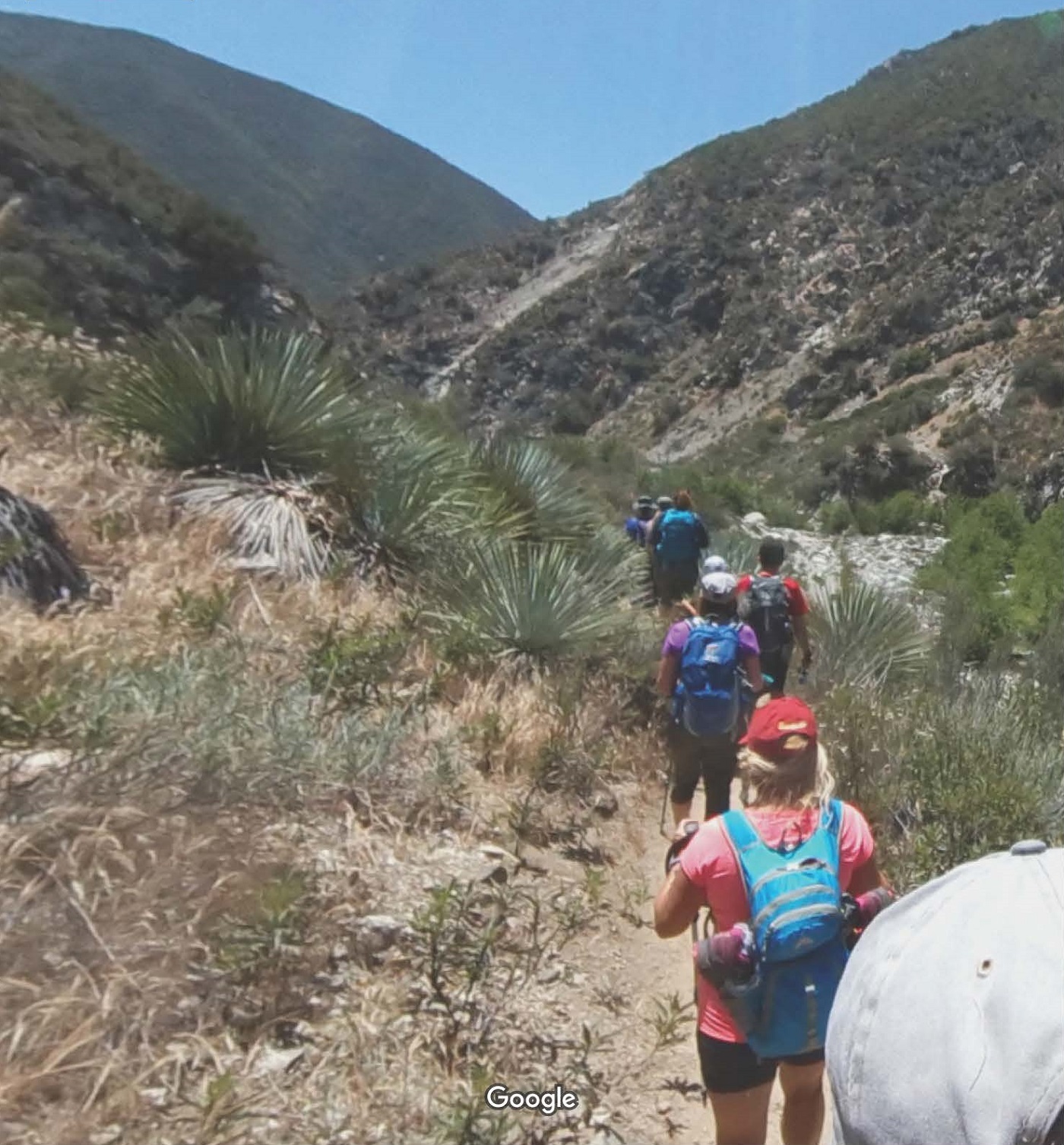 Scott Kennedy
Scott Kennedy After many hours of difficult, imaginary hiking, we finally made it to the Bridge to Nowhere. It first appeared as a mirage in the distance (although since this was a virtual hike, it can be argued that everything appeared as a mirage in the distance).
As we got closer, we saw that it was not a mirage, but a beautiful open spandrel arch nestled in between two ledges high above the river. It was a nicely proportioned structure with classic Depression-era concrete bridge barriers. The span looked well preserved, which made sense since it was isolated with no traffic and few weather impacts in the dry, warm climate.
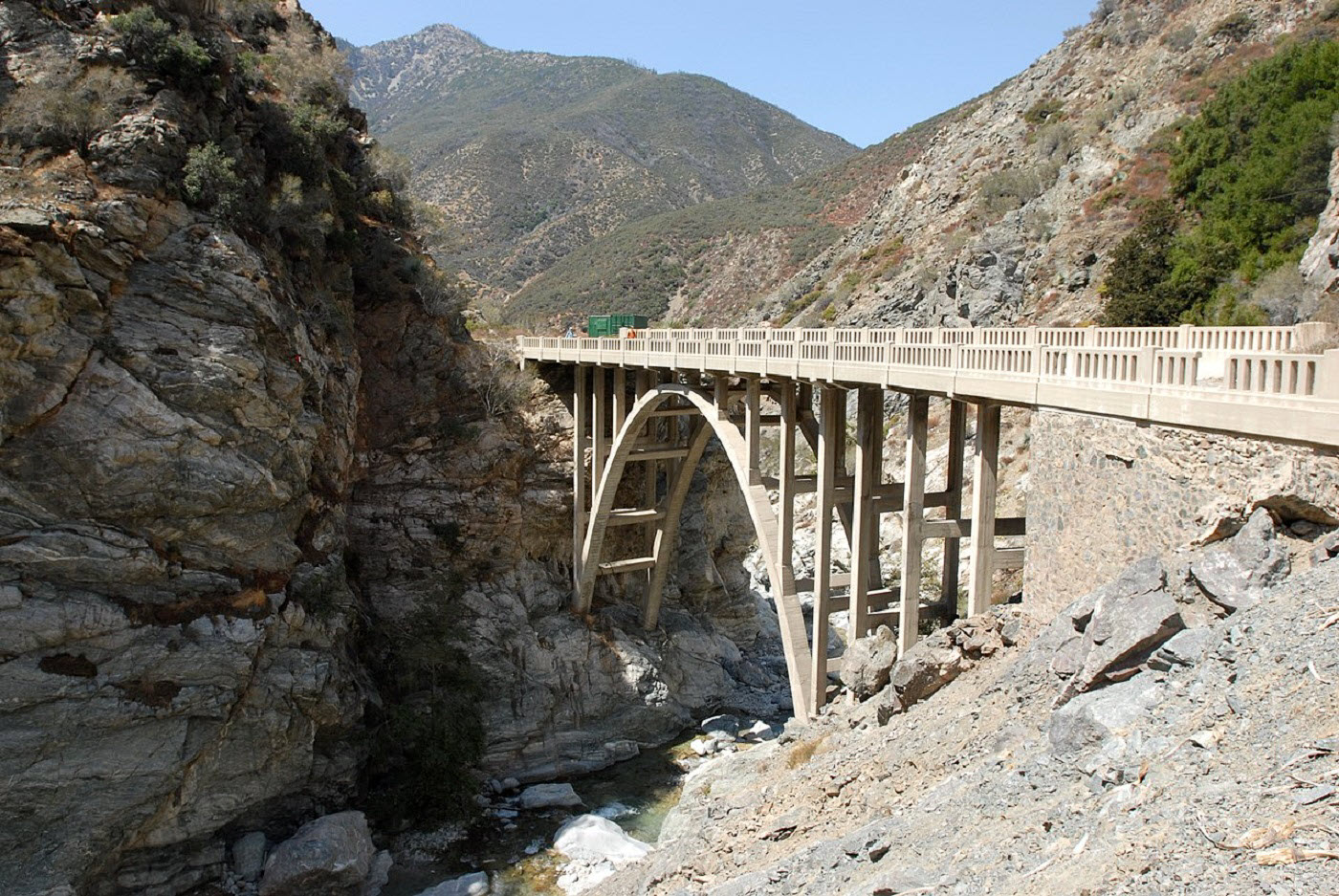 Thorsten Trotzenberg
Thorsten Trotzenberg The otherwise functionless bridge seemed like a perfect location for bungee jumping. Hikers also swim in the river below, and a service provides overnight tent camping at the site.
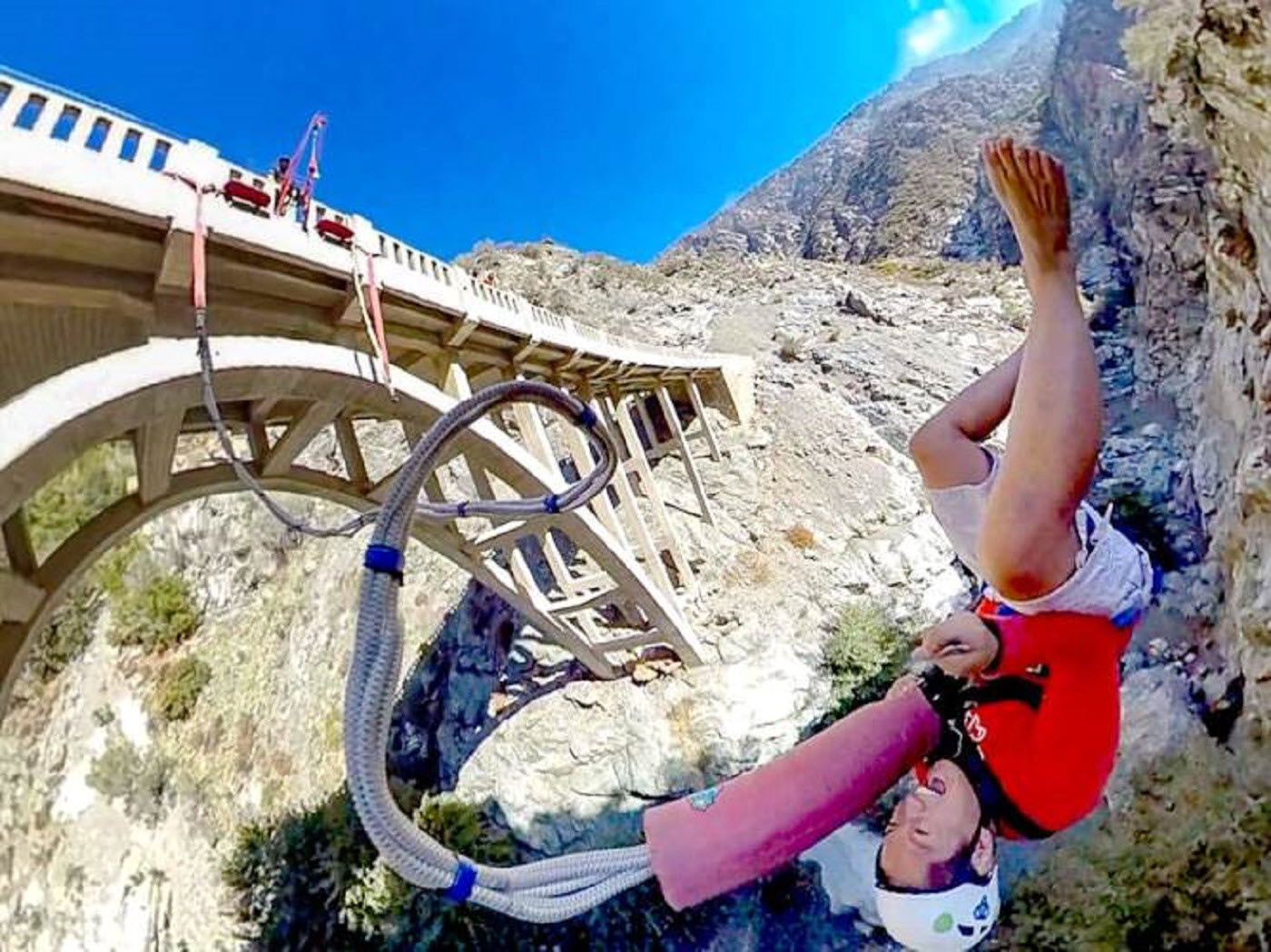 bungeeamerica.com
bungeeamerica.com Eric and I congratulated ourselves on making it all the way to the bridge. It would have been a great actual hike, but reality interfered with our planning. On Sept. 8, 2024, the Bridge Fire broke out and charred a large swath of the woods north of Los Angeles.
The wildfire started near the intersection of East Fork Road and Glendora Mountain Road in San Gabriel Canyon. It was named the “Bridge Fire” because it started near Cattle Canyon Bridge on the approach to the trailhead.
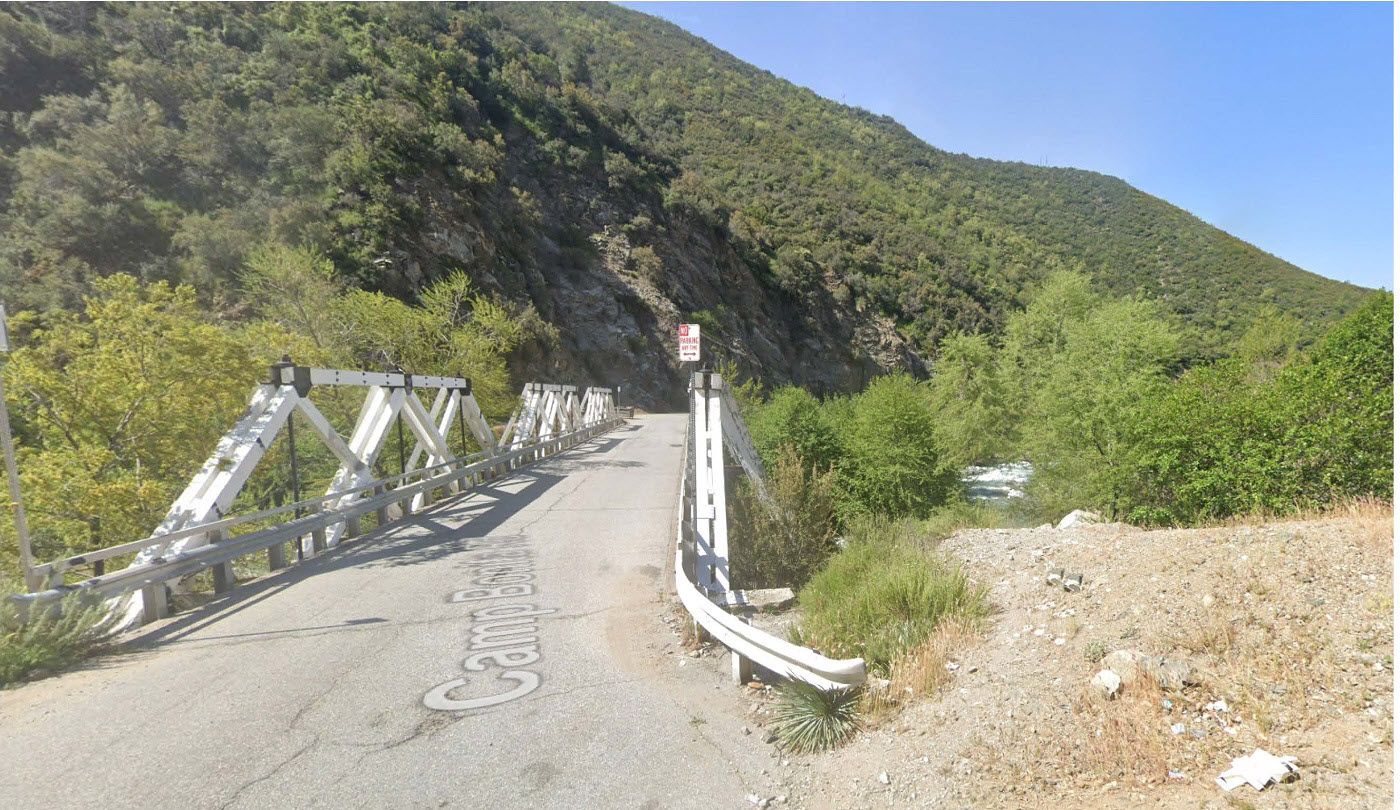
For a period of two months, the fire expanded out of control to burn over 56,000 acres. It was reported to have destroyed 81 buildings in largely remote areas in the San Gabriel Mountains. Many hiking trails were damaged, including access to the Bridge to Nowhere. The trail was expected to be closed throughout 2025, forcing us to reconsider and then cancel our hike.
At the end of 2024, the Bridge Fire was one of the largest and most destructive wildfires to strike southern California. However, that paled in comparison to January 2025, when the destructive Eaton and Palisades fires caused much greater damage, forced the evacuations of thousands of residents, and resulted in much loss of life. The Palisades fire largely destroyed the town of Pacific Palisades and caused 12 fatalities.
California Wildfires: Further reading
ASCE's Civil Engineering Source has several articles describing impacts of January 2025 California wildfires and ASCE assistance and response:
“Devastating wildfires hit close to home for LA civil engineers” (Jan. 12, 2025)
“Further Reading: Wildfire Resilience” (Jan. 13, 2025)
“As wildfires rage in LA area, infrastructure – including roadways – under threat” (Jan. 15, 2025)
“LA wildfires magnify need to rethink infrastructure” (Jan. 28, 2025)
“After the wildfires: Rebuilding and protecting Los Angeles” (Civil Engineering magazine May/June, 2025)



